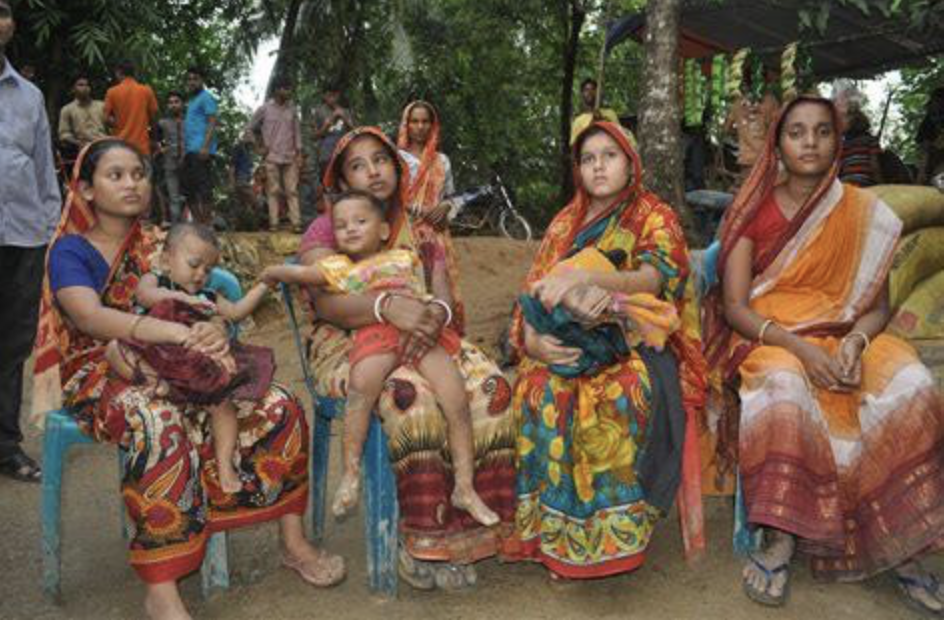On 22 May the Rohingya Muslims made the news not for their refugee situation, but for massacring Hindus. The militants responsible are members of the group Arakan Rohingya Salvation Army, also known as Arsa. The news was part of an Amnesty International report on an investigation into the 25 August 2017 attack on the Hindu village, Ah Nauk Kha Maung Seik in Maungdaw (Rakhine state), Myanmar. About 53 villagers were killed. Their proximity to another village, Ye Bauk Kyar, where about 46 were killed around the same time suggests Arsa may have also been responsible. Arsa has denied responsibility for both attacks. Still, it is the survivors of the attack who matter most. Around 500 of the Hindu villagers fled to Bangladesh from Maungdaw where they found assistance from local Hindus. These refugees are just a small part of a global refugee crisis.
The UN defines refugees as people fleeing persecution, war, or violence; often because of religion, ethnicity, or race. Refugees cross international borders, requiring international status as their home country can no longer protect them. As of June 2017, there are 22.5 million refugees around the world. This number includes those in a refugee-like state as well as Palestinian refugees registered by UNRWA. Still the number should be viewed as the best estimate of the world’s refugees as it is difficult to determine refugees living outside of camps; varied opinions exist on who is a refugee; and the variation in granting of refugee status across countries, among other potential discrepancies.
A refugee will spend 26 years on average away from home according to Ai Weiwei’s Human Flow, a 2017 documentary about the global refugee crisis. During those years away, some may seek resettlement in another country. On average, of officially registered refugees, roughly about 1% are resettled or 189,300 (UNHCR 2016). Currently the UN works with 130 countries, many of which work directly with the UNHCR to resettle refugees. The goal for resettlement is integration through self-sufficiency in their new communities. Organizations in host countries work directly with the refugees, such as the International Rescue Committee (IRC) in the United States. The IRC provides various support services—including legal aid, medical aid, English lessons, and family services—that are reflective of general integration assistance found in all host countries.
As a refugee stated in Human Flow, “no one leaves their country lightly.” Going back to the Hindu survivors, we can see the force that often drives a refugee from their home. A few have even returned to Myanmar as part of the controversial repatriation plan between Bangladesh and Myanmar. Those few Hindus represent one journey a refugee might make. And as of the 2016 UNHCR Statistical Yearbook, 552,230 refugees have been able to return home safely. Indeed, the hope of returning home is why most refugees stay close to their home countries. And it is why most refugees do not go to the West for resettlement: the top three host countries according to a 2016 UNHCR report were Turkey, Pakistan, and Lebanon.
Refugees living in Kutupalong Refugee Camp in Cox's Bazar, Bangladesh
However, the attacks interconnected with wider events as the August massacres were part of deliberate attacks on police posts, which some Rohingya supported and others did not. These spurred reprisal attacks by the Myanmar military and local Buddhist mobs. The attacks displaced many Rohingya; 700,000 have crossed into Bangladesh since August 2017. As various refugee experiences suggest the Rohingya may be in Bangladesh for a few years, decades, or the rest of their life. Only time will tell—and it is that story of waiting that captures the most common theme of a refugee’s experience. The Hindus and Rohingya illustrate how the global refugee crisis has weaved together many individual refugee experiences, connecting one another at different points, together into a “singular” experience. But looking at the individual seams, it is much more complex.
Rakhine (Arakan) State in Myanmar
Teresa Nowalk
Teresa is a student at the University of Virginia studying anthropology and history. In her free time she loves traveling, volunteering in the Charlottesville community, and listening to other people’s stories. She does not know where her studies will take her, but is certain writing will be a part of whatever the future has in store.




